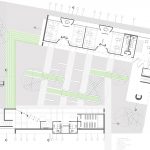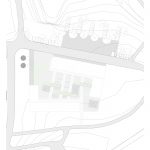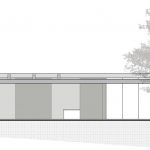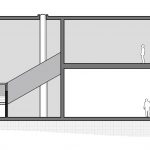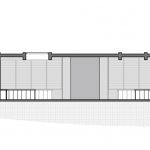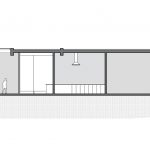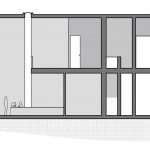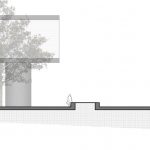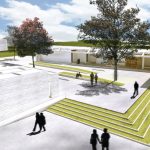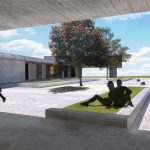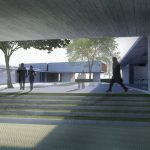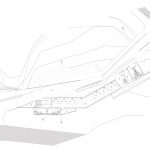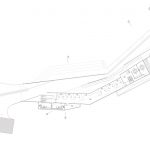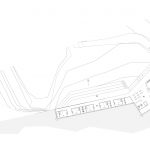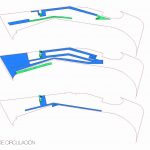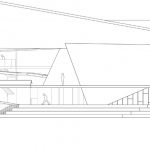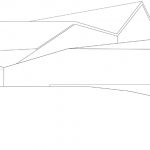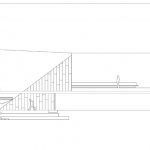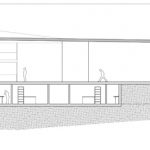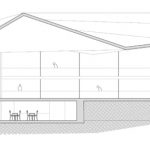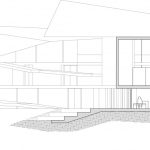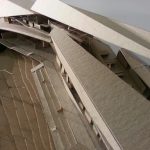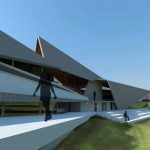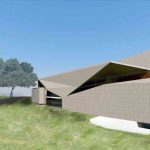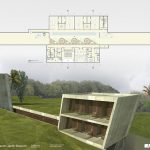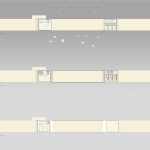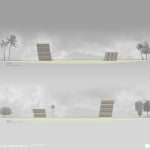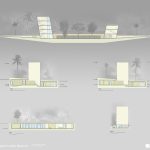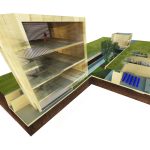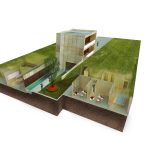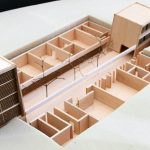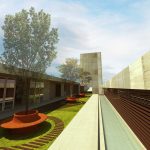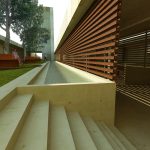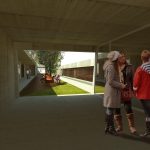Research Center and Tropical Botanical Museum
Instructors: Prof. Eugenio Ramírez & Prof. Robín Planas
Students Project:
- TEAM 1 – Camila Hernández & Caleb Príncipe
- TEAM 2 – Fabiola Arroyo & Gabriela Rodríguez
- TEAM 3 – Camila Rivera & Gustavo Vega
Date: UPR BAD 2011-2012
TOS[er]: Kathia Sánchez Ríos
Posted: May 2013
Design Objectives:
- Develop a cultural and academic facility (symbiotic relation).
- Recognize Puerto Rico’s tropical environment.
- Consider the consequences of siting.
- Forge strategies for ventilation and natural illumination.
TEAM 1 Take:
- Design 2 volumes that interact with the main roads.
- The 2 volumes divide the program.
- Create a central square to connect the buildings.
- TEAM 1 Floor Plan
- TEAM 1 Site Plan
- TEAM 1 Elevation
- TEAM 1 Section
- TEAM 1 Section
- TEAM 1 Section
- TEAM 1 Section
- TEAM 1 Section
- TEAM 1 Perspective
- TEAM 1 Perspective
- TEAM 1 Perspective
TEAM 2 Take:
- The lengthwise shapes is based on the interaction between 2 important sidewalks.
- Establish a direct connection between public and private spaces.
- Begin and end the project with public spaces [museum and library].
- Unify spaces through transparency and shifting floor levels.
- TEAM 2 Floor Plan
- TEAM 2 Floor Plan
- TEAM 2 Diagram
- TEAM 2 Elevation
- TEAM 2 Elevation
- TEAM 2 Elevation
- TEAM 2 Elevation
- TEAM 2 Elevation
- TEAM 2 Elevation
- TEAM 2 Model
- TEAM 2 Model
- TEAM 2 Perspective
- TEAM 2 Perspective
TEAM 3 Take:
- Ground elevations are of essence.
- Divide the program in 2 volumes.
- NATURE + PROJECT = ONE.
- TEAM 3 Floor Plan
- TEAM 3 Floor Plan
- TEAM 3 Elevation
- TEAM 3 Section
- TEAM 3 3D Section
- TEAM 3 3D Section
- TEAM 3 Model
- TEAM 3 Perspective
- TEAM 3 Perspective
- TEAM 3 Perspective
- TEAM 3 Perspective
TOS[er] Reaction: All projects present different solutions to ONE strategy. They establish a dialogue between nature-made and man-made artifacts; the environment’s effects on place. What’s interesting is the varied site interpretation of each project. Each project transports you to a different environment. The organic dialog you perceive is created by the connections between the buildings. The intentions of each project are to diffuse the threshold between interior and exterior spaces. In a way, the buildings insert you in nature as the botanical garden inserts itself in the urban area; both offer a FRESH perception of reality. The botanical garden works as a GREEN LUNG for the metropolitan area that cushions you from the city hustle.
GARDEN = CITY BUFFER
The main idea is to change PERCEPTION. One of Puerto Rico’s problems is that we forget how to interact with nature. Sometimes, new projects do not welcome nature into their realm. If we create projects with this kind of strategies – that overlap city with nature – we can begin to plan our surroundings with enticing and innovative solutions.

